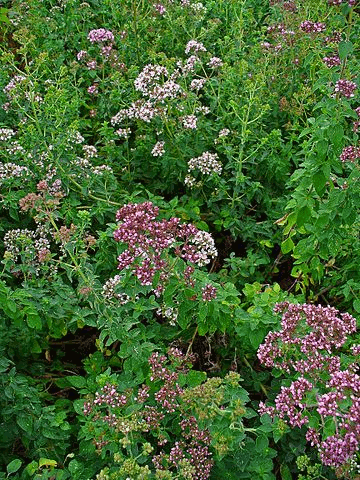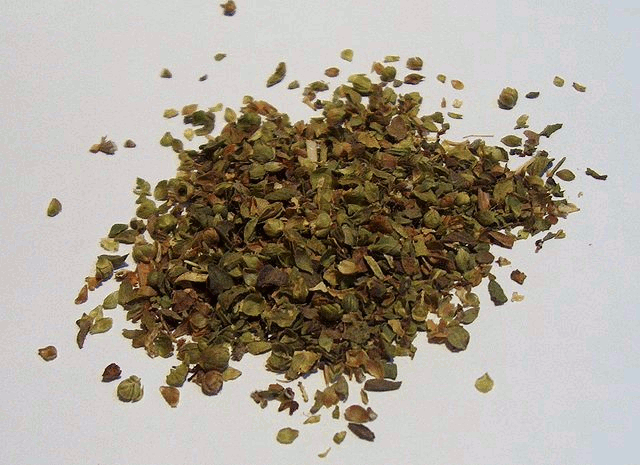Oregano
 Common Names: Oregano, wild marjoram
Common Names: Oregano, wild marjoram
Scientific Name: Origanum vulgare
Climate: Cold, warm and hot. It prefers warmer, dry climates, but it is resistant to cold
Plant Description: It is a perennial herb of the mint family. It has the opposite-growing, oval-shaped, dark green leaves with a length of two or three centimeters. The flowers are white, purple, or red. Growing between 20 and 80 cm tall, it forms a small shrub, with reddish stems, and usually has the leaves on top of the plant.
Cultivation: It is a very resistant plant, but it requires a dry environment, with occasional watering. It prefers direct sunlight or partial shade. It can adapt to various soil types, but prefers well-drained soil.
Oregano from the nursery can be planted in a pot or directly to the ground. It does not tolerate low temperatures of frost or snow. Sow the seeds with just a little soil on top. Keep them moist as they germinate. Divide the plants during the dormant period of the plant. Remove old flowers, woody matter, and carefully separate roots. Sow the plants 30 cm apart. This plant can become problematic due to its ability to spread. Harvest frequently and control its unwanted spread.
To harvest, sections of the oregano stalks can be cut regularly up to three centimeters from the ground. During the dormant period, the stems can be cut completely to renew their growth. You can also dry the leaves for later use.
 Uses: It is used as a cooking spice. Dried leaves have a stronger flavor than fresh ones. Oregano tea is good for stomach problems, respiratory problems and to facilitate menstruation. It can be used with soap to treat acne. You can also make a paste from dry leaves to treat pain.
Uses: It is used as a cooking spice. Dried leaves have a stronger flavor than fresh ones. Oregano tea is good for stomach problems, respiratory problems and to facilitate menstruation. It can be used with soap to treat acne. You can also make a paste from dry leaves to treat pain.
Oregano contains carbohydrates, fats, and proteins, as well as potassium, calcium, sodium, phosphorus, and iron. It also contains vitamins A, B and C.
Oregano has digestive benefits, is an anti-inflammatory that improves the respiratory system and is a stimulant for the immune system.
Since it is an aromatic plant, it can be grown as a companion to other plants to repel harmful insects.
Pests and Diseases: The fungi that can affect the leaves and roots of oregano can be controlled by keeping the plant clean of dead foliage and ensuring that the soil where it is grown is well drained.
References:
https://www.ecured.cu/Or%C3%A9gano
https://ecoinventos.com/oregano/
https://www.infoagro.com/aromaticas/oregano2.htm
En español: Orégano
